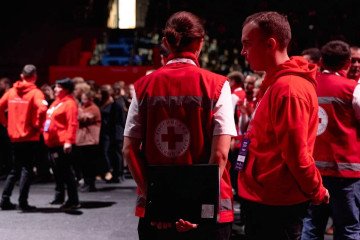- Category
- Anti-Fake
How Russia’s March for the WWII Fallen Turned into Putin’s Propaganda Parade
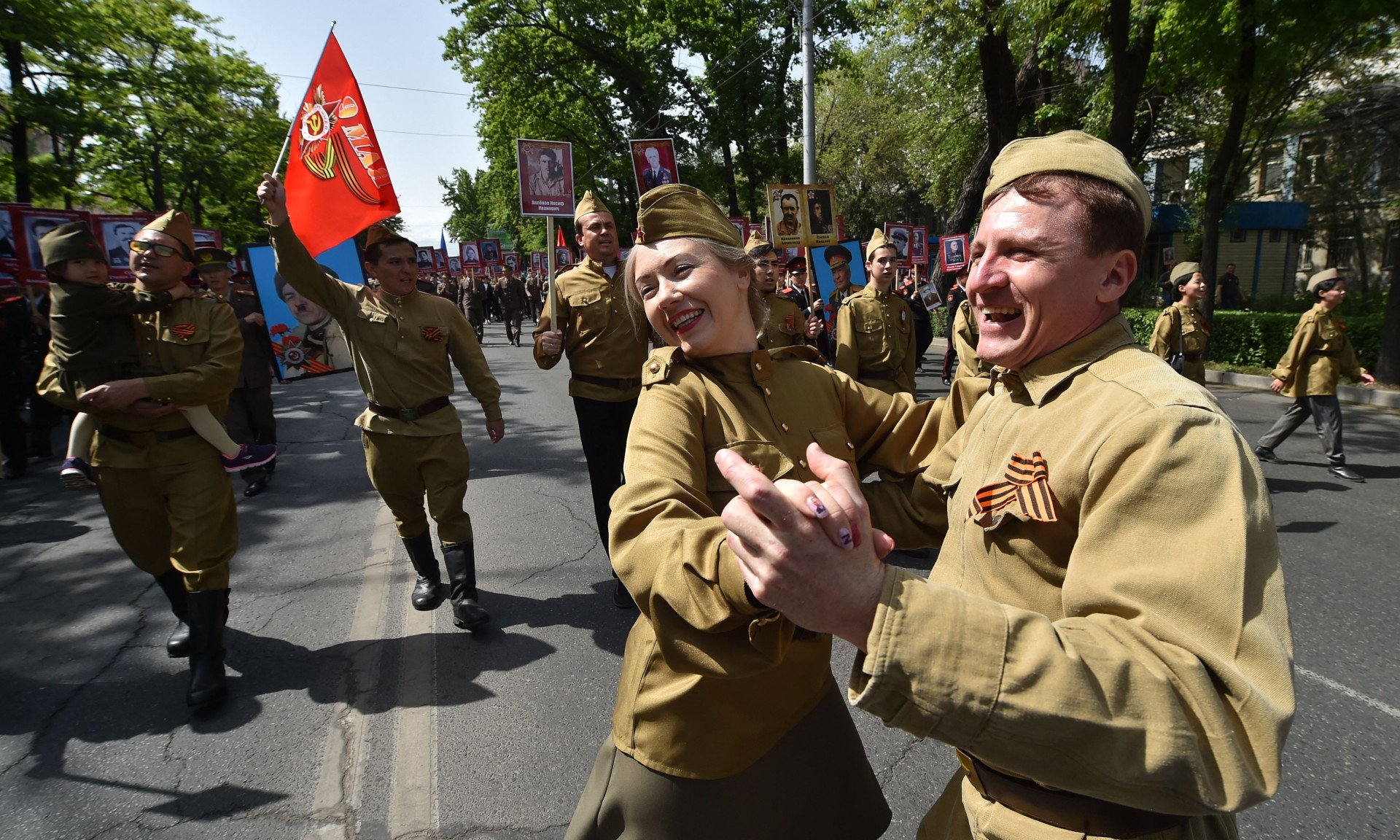
As the world prepares to commemorate the Day of Remembrance and Victory over Nazism in World War II, Russia’s observance has become heavily politicized. On May 9, the “Immortal Regiment" now parades children in Soviet uniforms, carrying portraits of Stalin and banners proclaiming “We Can Do It Again,” in a surreal display of state-driven propaganda.
World War II was the deadliest conflict in human history, lasting from September 1, 1939, to September 2, 1945, and claiming between 50 and 85 million lives. Among the greatest losses were those of the Soviet Union republics, with an estimated 27 million dead, both soldiers and civilians.
Out of such immense sorrow, a tradition of remembrance was born — a tribute meant to preserve the memory of the fallen and remind humanity of the true cost of war. But in recent years, one of these traditions, Russia’s “Immortal Regiment,” has been stripped of its original purpose and increasingly weaponized for political gain.
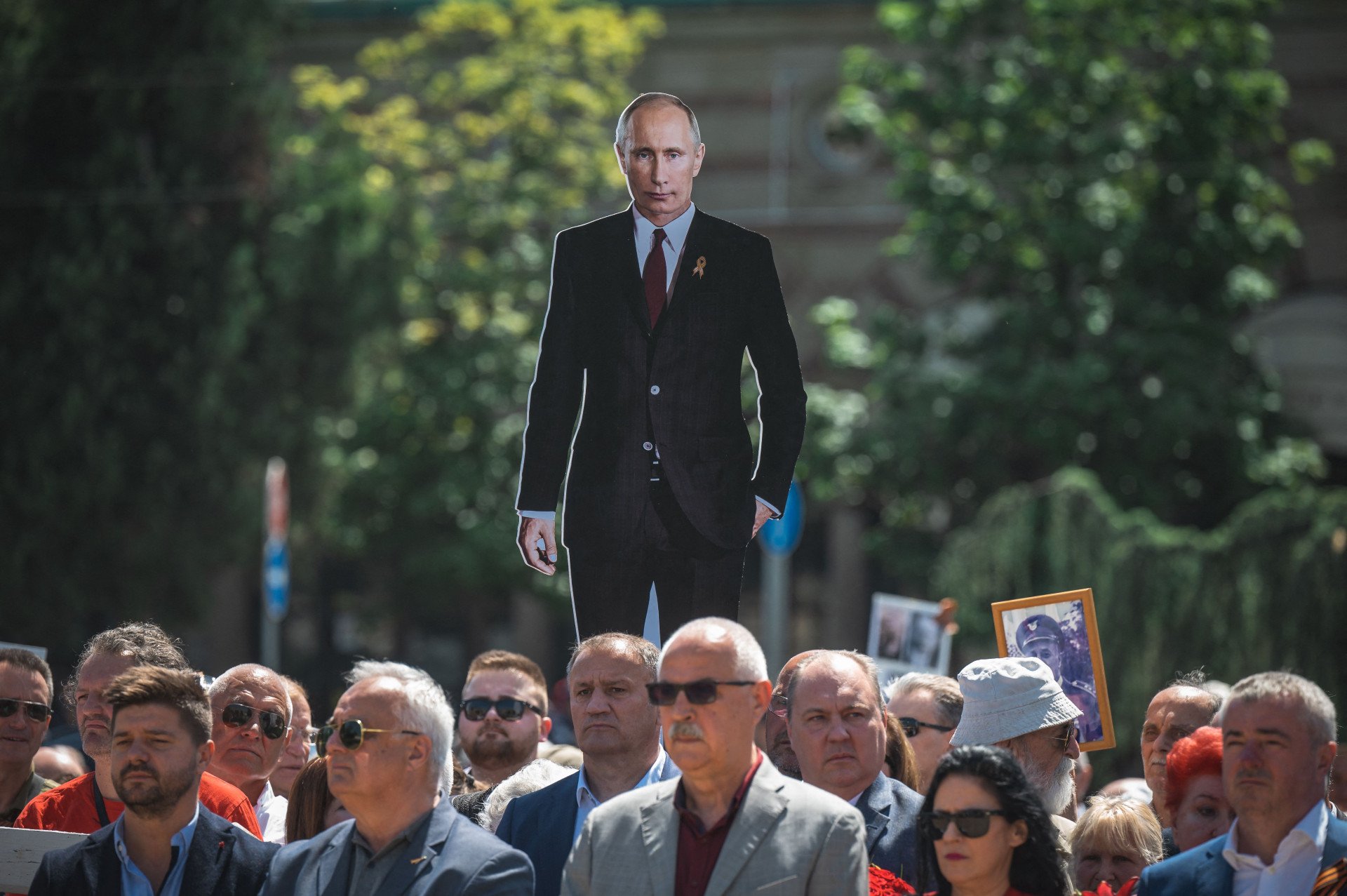
From grassroots tribute to national movement
Journalists from the Tomsk Media Group in Russia organized the first Immortal Regiment march on May 9, 2012. The march was founded as a grassroots movement to honor personal family histories.
Participants carried nearly 2,000 portraits of their relatives who fought in the Great Patriotic War , with more than 6,000 residents joining the procession. The initiative quickly gained broad community support.
The Immortal Regiment movement was initially founded on four core principles: non-commercial, non-political, non-promotional, and independent of state control.
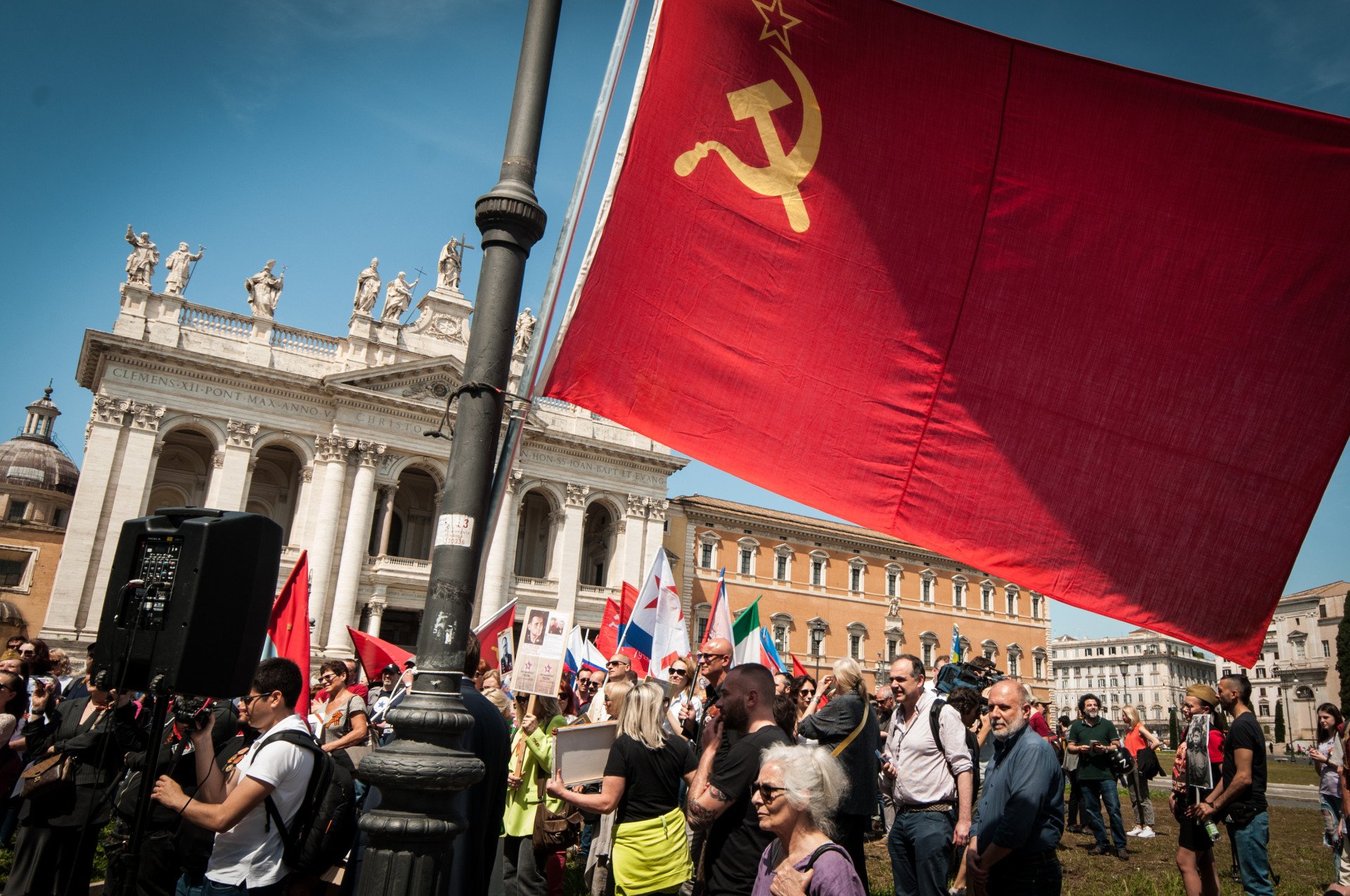
However, by the spring of 2015, the march was being heavily promoted in Moscow, with the original Tomsk organizers no longer involved. Instead, it was linked to the regional patriotic organization “Immortal Regiment — Moscow,” which later confirmed its collaboration with the All-Russia People’s Front (ONF) and United Russia , claiming there was no political agenda behind the partnership.
The ONF quickly expanded its role nationwide. In Moscow, Russian leader Vladimir Putin approved the march’s passage through Red Square. “At a time when our partners in Europe and the US are trying to rewrite history, this initiative is more important than ever,” said ONF co-chair Alexander Brechalov.
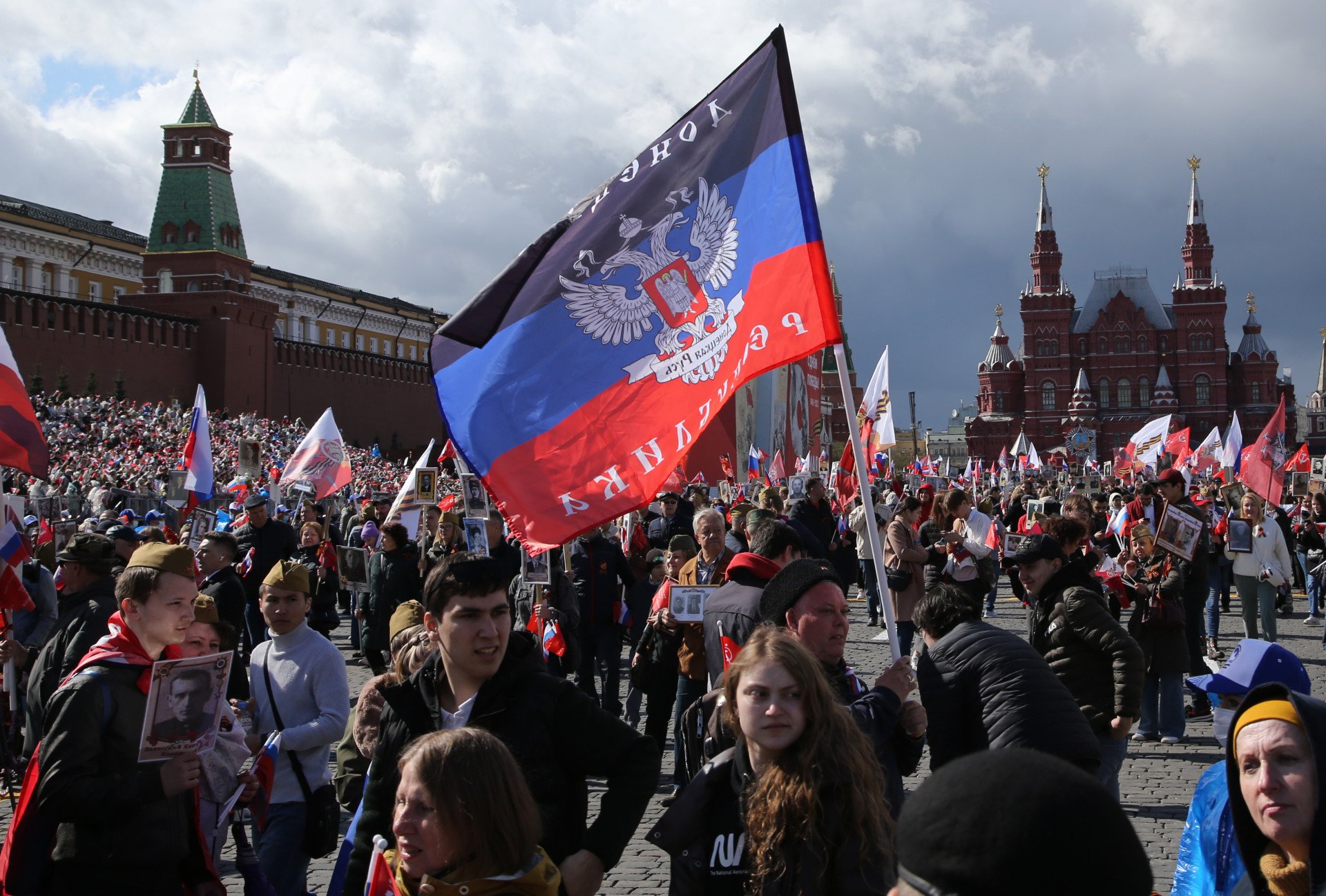
What was supposed to be a reminder of victory over Nazism, started rapidly transforming into a political tool for the Kremlin, where initial values of remembrance and sorrow turned into a parade boasting the power of Russia and the possibility of “doing it again.”
The march’s scope broadened even further in 2022. Voronezh Governor Alexander Gusev suggested expanding the Immortal Regiment march on Victory Day to honor not just World War II veterans, but also those involved in Russia’s ongoing invasion of Ukraine, referred to as the “special military operation.”
“Bring portraits not only of those who directly participated in the battles of the Great Patriotic War, but also of […] modern heroes in the fight against Nazism, including participants in the special operation in Ukraine,” the governor urged the region’s residents.
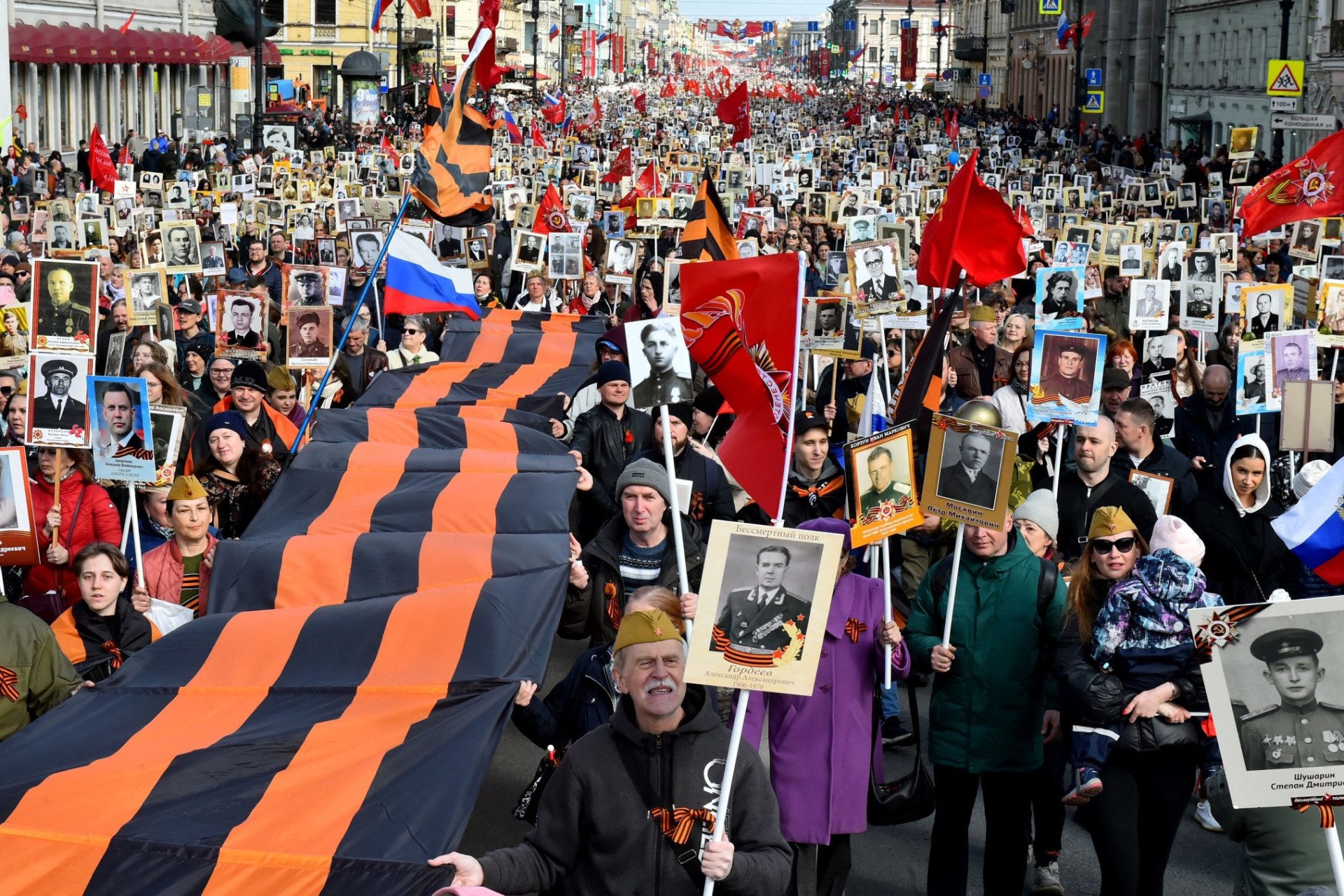
Symbols of the Immortal Regiment march
The march now glorifies figures tied to Russia’s aggressive foreign policies, including war criminals and military leaders associated with operations in Syria and the war in Ukraine.
A prominent symbol seen throughout the march is the St. George ribbon, a black-and-orange emblem that originated as a mark of military valor in the Russian Empire. It later became synonymous with the Soviet Union’s victory over Nazi Germany in World War II. In recent years, however, the ribbon has come to represent imperial revanchism, and since 2014, it has been increasingly associated with Russia’s ongoing aggression against Ukraine.
Alongside the ribbon, portraits of Vladimir Putin and Joseph Stalin frequently appear on posters and T-shirts, a stark departure from the march’s original commemorative intent.
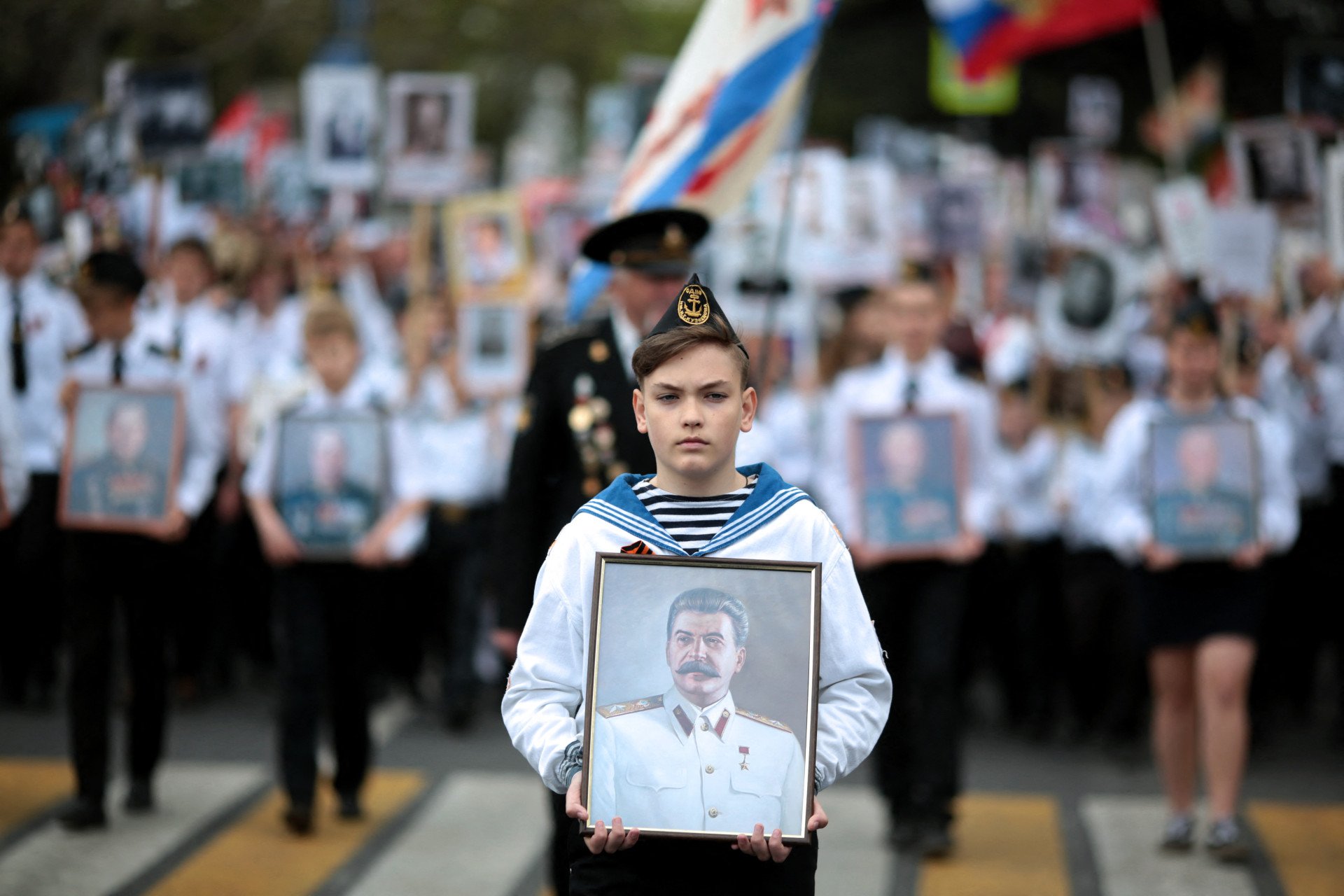
The Victory Banner, depicting a red flag with a hammer and sickle, is often waved during the Immortal Regiment marches. The use of the communist hammer and sickle in modern-day Russia, particularly in events like the Immortal Regiment marches, carries a troubling connotation. Originally a symbol of the Soviet Union’s ideological foundation, representing the union of industrial workers and farmers, it has long been associated with a regime that, under Joseph Stalin, oversaw the deaths of millions through purges, forced labor camps, and famines.
The display of vehicles emblazoned with slogans such as “To Berlin” and “We Can Do It Again” during Russia’s Immortal Regiment march is yet another example of how the event has been politicized.
“To Berlin” — a symbol of Soviet military victory
The phrase “To Berlin” refers to the Soviet Union’s capture of Berlin in 1945, marking the end of Nazi Germany. In the context of the Immortal Regiment march, it symbolizes Russia’s victory over Nazi Germany.
Using this slogan today, Russia draws on Soviet-era victories to justify its military actions, including the invasion of Ukraine, framing its past military strength as a point of pride.
“We can do it again” — renewed military intent
The likely inspiration for the “We can do it again” slogan is a graffiti left by an unknown Soviet soldier on the walls of the Reichstag in 1945:
“For the air raids on Moscow. For the shelling of Leningrad. For Tikhvin and Stalingrad. Remember and don’t forget. Or we might do it again.”
Although the slogan emerged as a reminder of the atrocities the Soviet Union had endured during the war and a warning to Nazi Germany, implying that Russia could retaliate for its wartime suffering, decades later, the phrase resurfaced as part of the “Victory Mania.”
Stickers with the phrase “We can do it again” reportedly first appeared before May 9, 2012. Initially, the sticker featured a figure with a hammer and sickle for a head, sexually assaulting another figure with a swastika for a head. The phrase became widely popular in spring 2014, amid Russia’s invasion of Ukraine’s Crimea and both Luhansk and Donetsk regions.
Commenting on Moldova’s ban on the Z and V symbols and the St. George ribbon, President Maia Sandu declared in 2022: “'We can do it again’—no. 'Never again'—yes.”
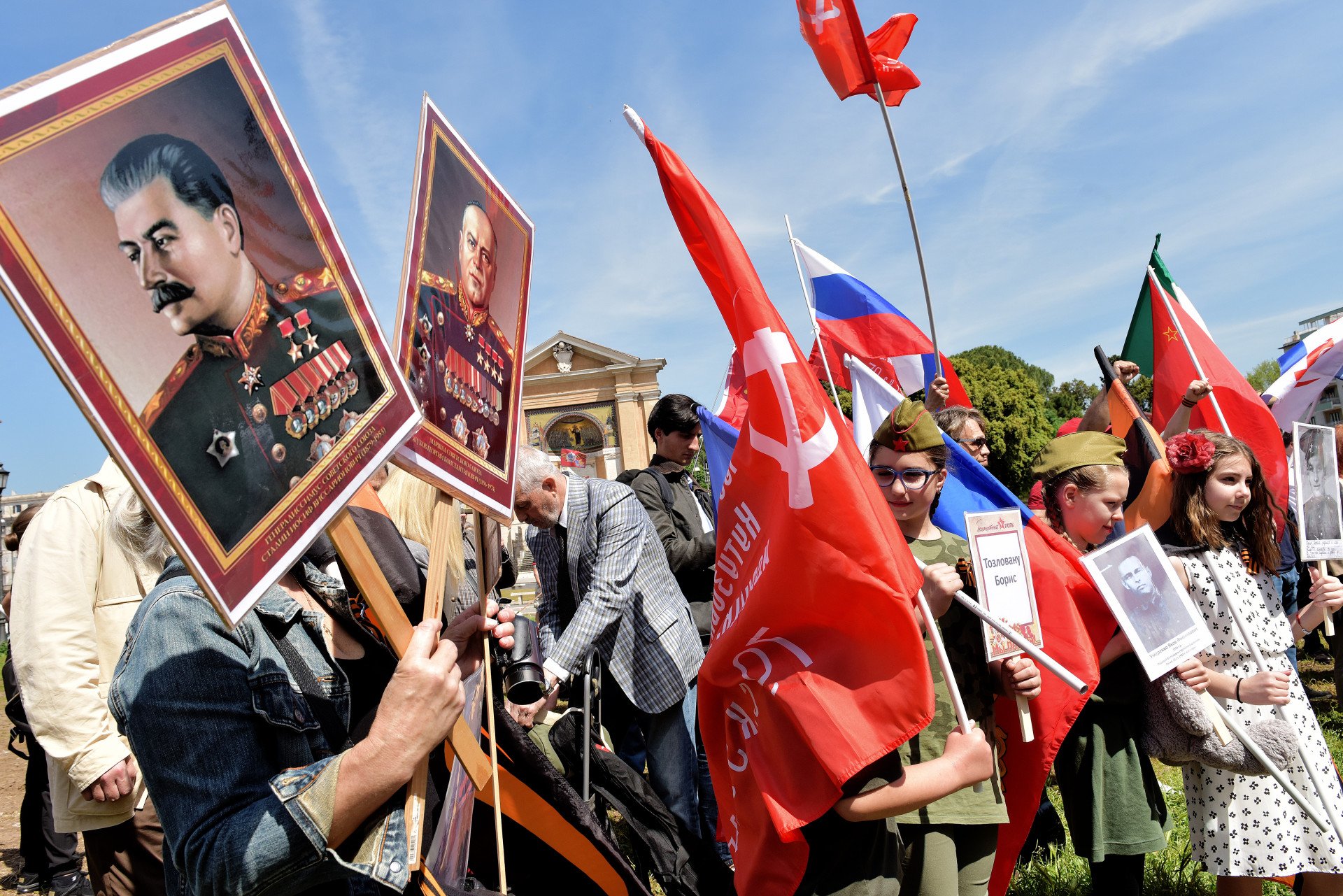
The global expansion of the Immortal Regiment and its ideological agenda
The Immortal Regiment march did not stop at the Russian borders. It expanded globally, with Russian diplomats actively participating in organizing these events in over 80 countries, including the United States, Serbia, Italy, Germany and others. This expansion has transformed the march from a grassroots remembrance into a tool for promoting the Russkiy Mir ideology, which emphasizes Russian cultural and political influence abroad.
The march’s events abroad have perpetuated the Soviet myth of the “Great Patriotic War,” omitting the early cooperation between Nazi Germany and the Soviet Union. Russian government has also been working on appropriating the victory over Nazism, presenting it as Russia’s sole achievement while disregarding the contributions of other nations, especially Ukraine, which lost according to estimates between 5 and 7 million people.
Putin said that “the Soviet Union […] claimed an epic, crushing victory over Nazism and saved the entire world,” in the article The Real Lessons of the 75th Anniversary of World War II, published in 2020. There, he also suggested that Poland, along with the United States, the United Kingdom, and other nations involved in the Treaty of Versailles, bore partial responsibility for the outbreak of World War II.
Yet, the pact between Nazi Germany and the Soviet Union, signed by foreign ministers Joachim von Ribbentrop and Vyacheslav Molotov on August 23, 1939, was what ultimately paved the way for the outbreak of World War II, EU Justice Commissioner Vera Jourova told the European Parliament.
In February 2022, Putin launched the full-scale invasion of Ukraine under false pretenses, including the claim that Russia needed to “denazify” the country—a narrative aimed at painting Ukraine’s democratic government, led by a Jewish president, as extremist. This claim has been widely rejected, with no credible evidence supporting the existence of a Nazi regime in Ukraine.
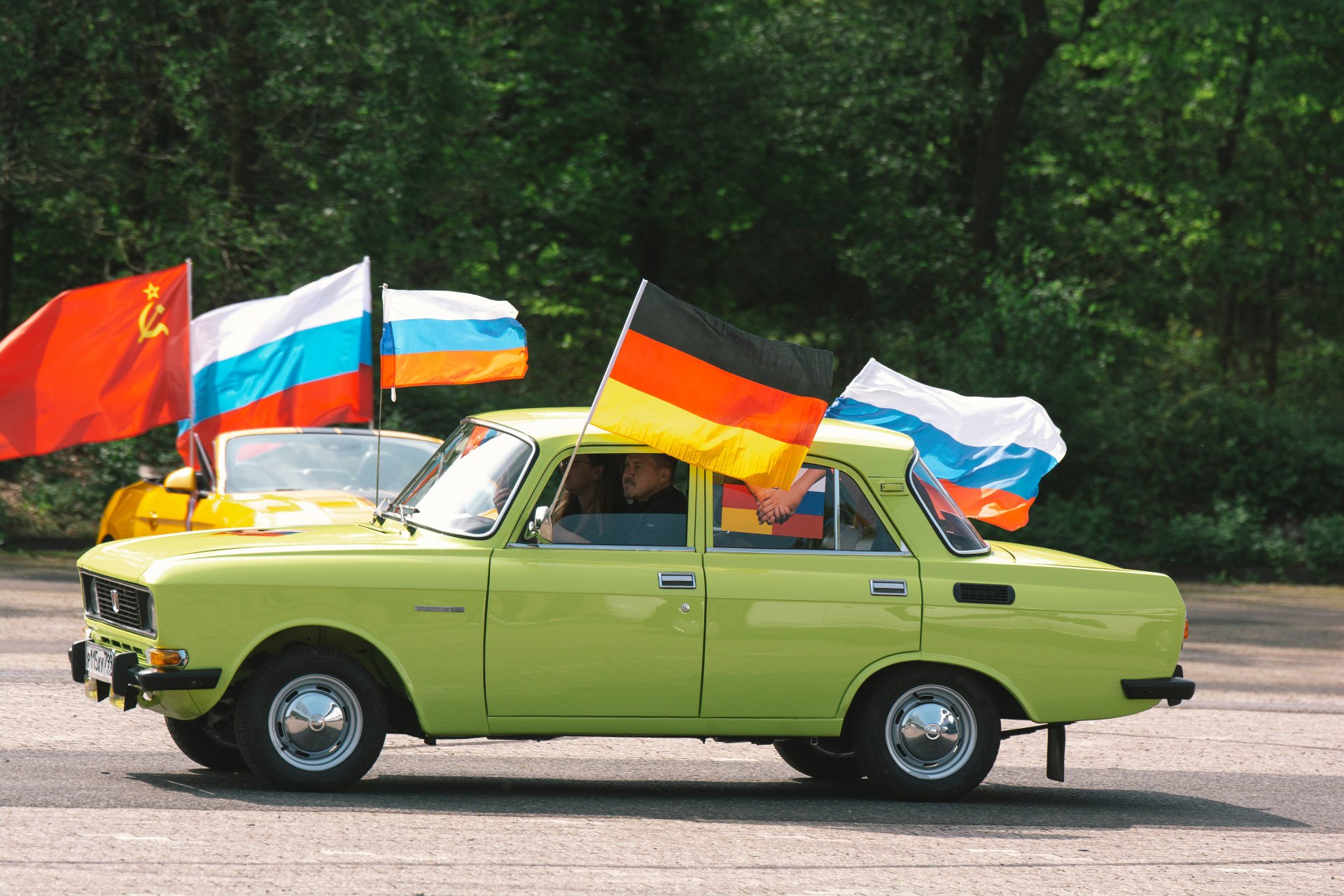
In reality, Russia’s invasion has devastated the country: nationwide missile strikes have targeted the energy grid, thousands of civilians have been killed, and Ukrainian children have been abducted from occupied territories.
“Every time the Ukrainians strive to build a democratic society, Russia labels them as Nazis,” José Casanova, professor emeritus of sociology at Georgetown University and senior fellow at the Berkley Center for Religion, Peace, and World Affairs, said: “To justify violence, you first need to dehumanize the other, and that’s precisely what’s unfolding now.”
While the Immortal Regiment is framed as a memorial event, it is also a subtle form of Russian influence, pushing the idea of a unified Russkiy Mir under Russian leadership, especially among Russian-speaking communities in Europe.
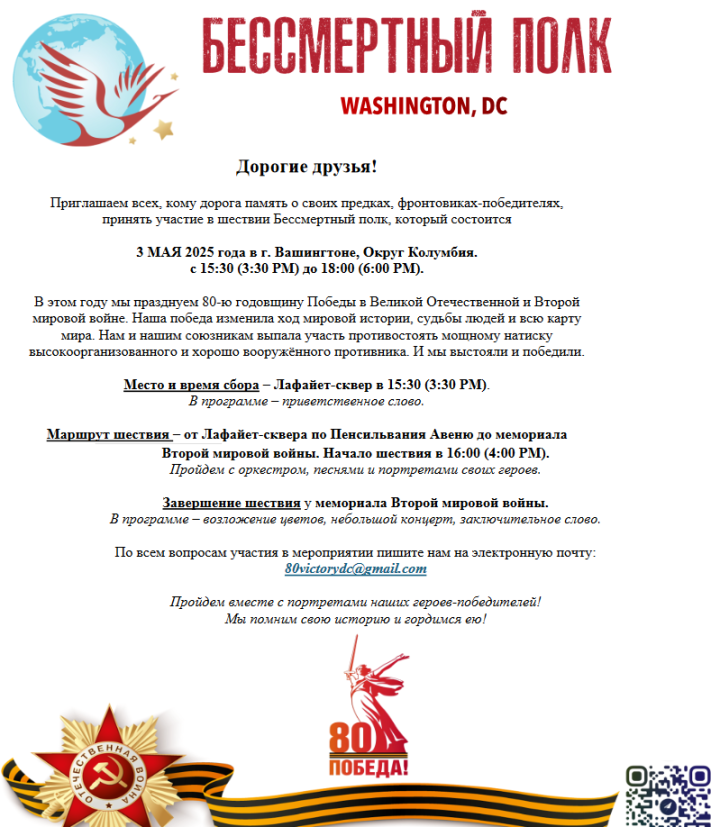
The march is expected to take place in various countries in 2025, including Washington, the United States, on May 3.
“We will march with an orchestra, songs, and portraits of our heroes,” the organizers stated in a flyer adorned with Soviet symbols and the black-and-orange St. George’s ribbon—a symbol that, since 2014, has become associated with Russia’s military aggression against Ukraine.
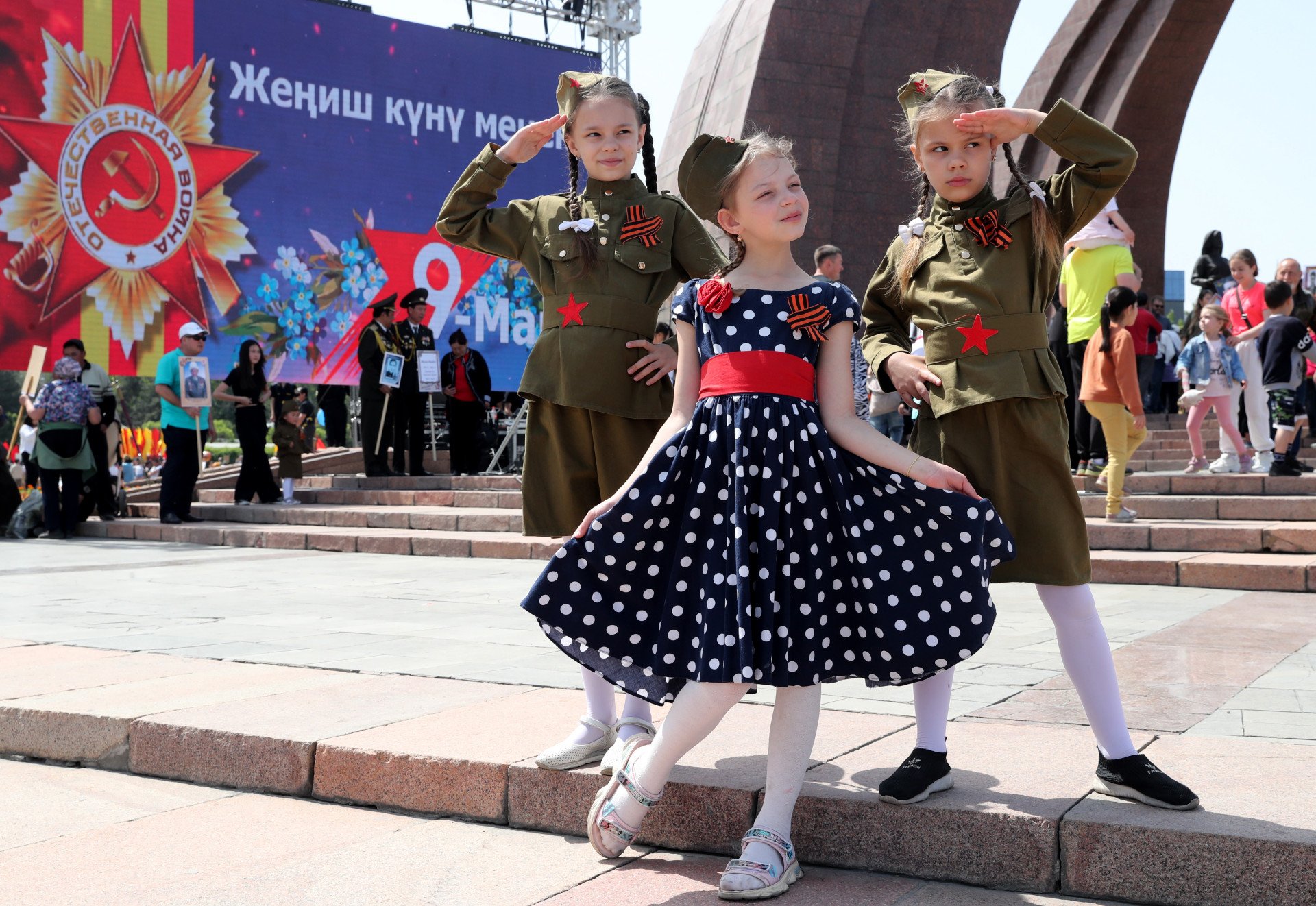
The use of children in the Immortal Regiment
In recent years, Russian authorities have increasingly involved children in the Immortal Regiment events. Schools and educational institutions are often mandated to participate, with guidelines from the Ministry of Education encouraging students to bring portraits of their relatives who fought in World War II. While some students express indifference or reluctance, others feel compelled to participate due to the pressure from educational institutions and the broader societal expectations.
It is not a rarity, seeing children during the procession being dressed in soviet uniforms, outfitted with symbolic items such as Soviet-era medals and military helmets, with toy weapons or riding on military vehicles.
As some leaders prepare to attend this year’s “Victory Day” ceremony in Russia, the EU’s top diplomat, Kaja Kallas, warned European leaders against participating in Moscow’s military celebrations on May 9.
“What was also discussed very clearly, and said by different member states, is that any participation in the 9th May parades or celebrations in Moscow will not be taken lightly on the European side, considering that Russia is really waging a full-scale war in Europe,” Kallas told journalists in Luxembourg following a meeting of foreign ministers.
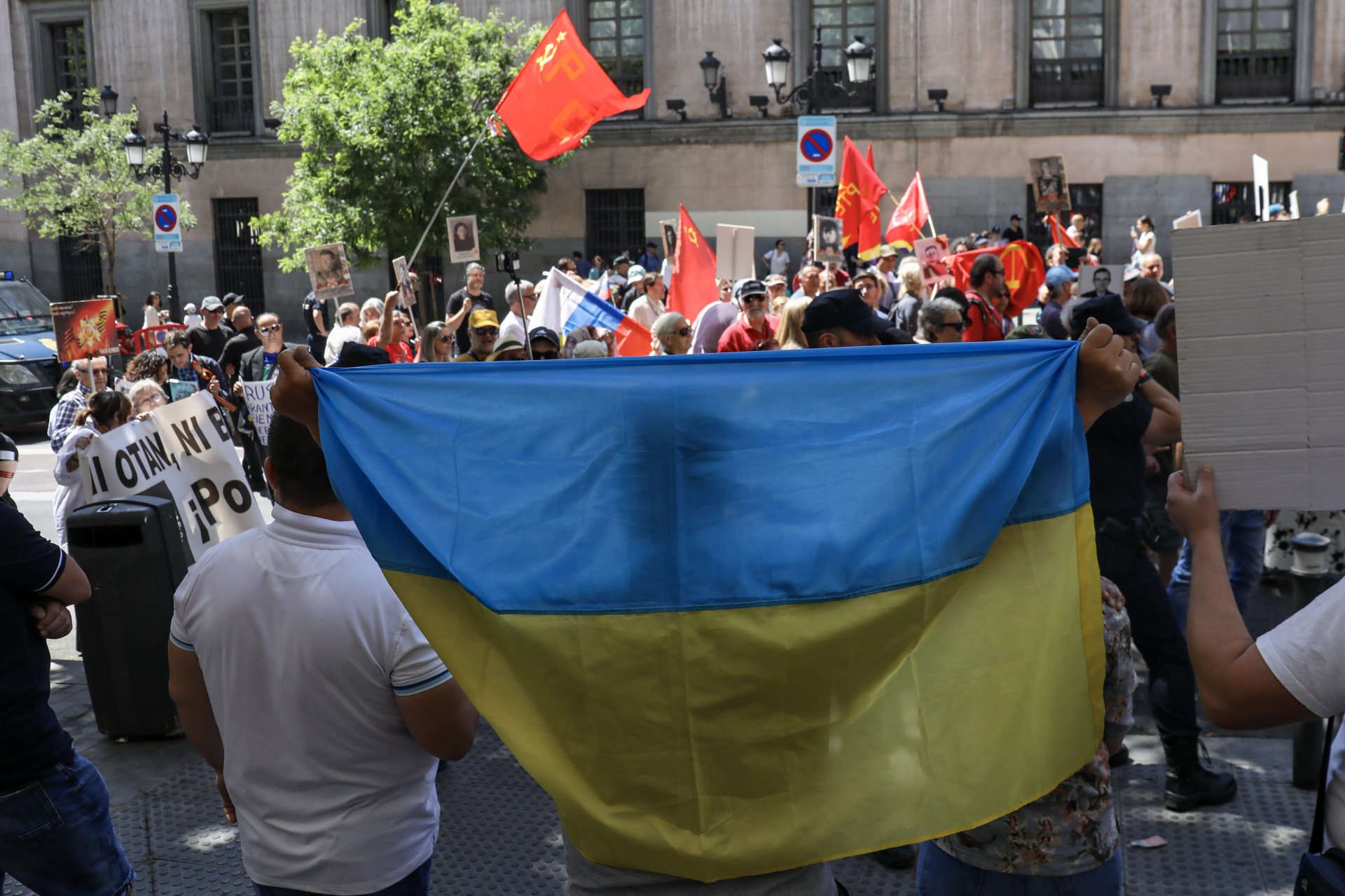
The growing use of Soviet-era symbols and the display of war criminals during the march raise questions about the true purpose of the event in Russia.
What was once a day to honor those who sacrificed during WWII now seems to serve as a platform for justifying Russia’s current military actions.
-f88628fa403b11af0b72ec7b062ce954.jpeg)
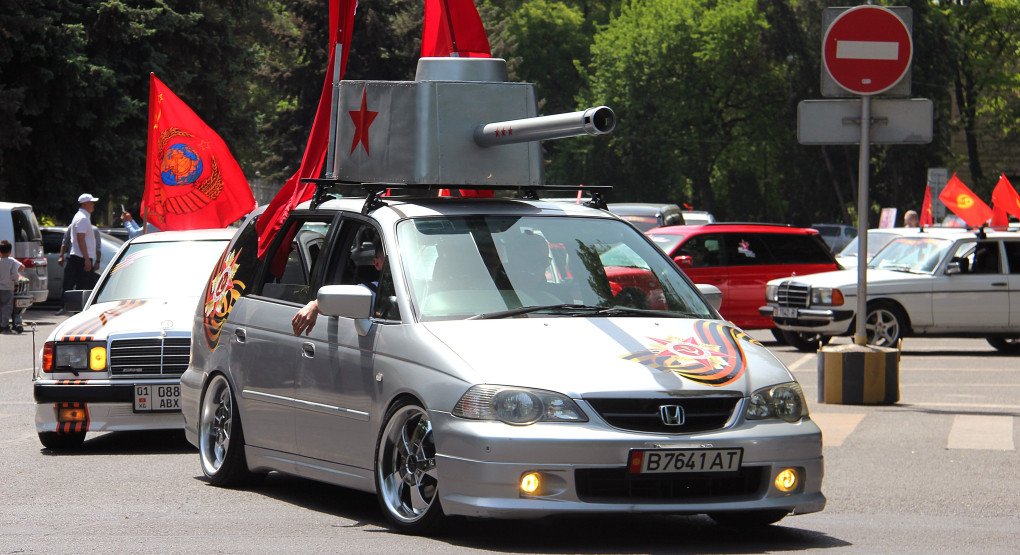
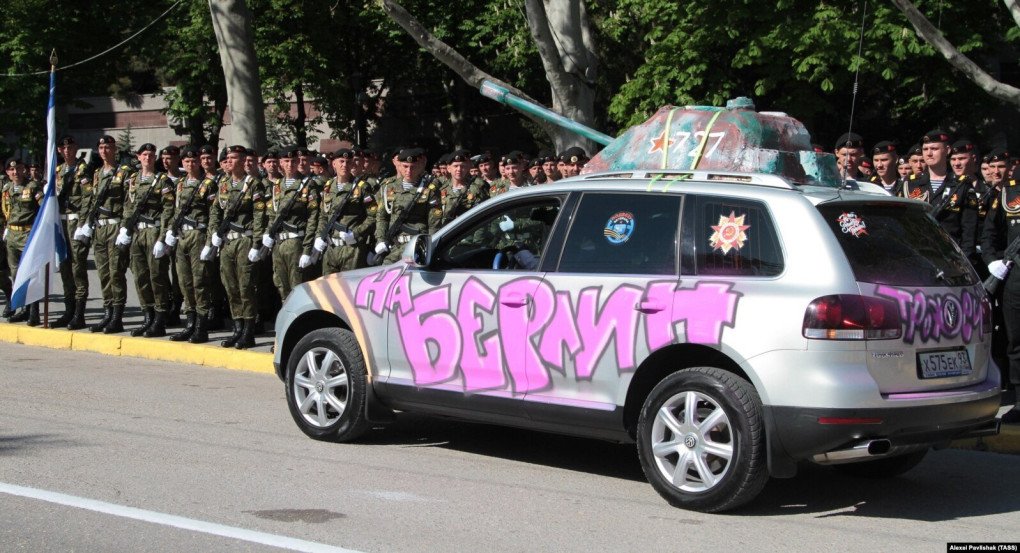




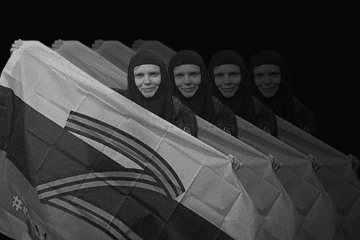
-46f6afa2f66d31ff3df8ea1a8f5524ec.jpg)
-8ddd9e24f95bb9d73d6d11d75f774999.png)
-29a1a43aba23f9bb779a1ac8b98d2121.jpeg)
-283d77c1379d612e6f72cf1b6de7dacb.png)
